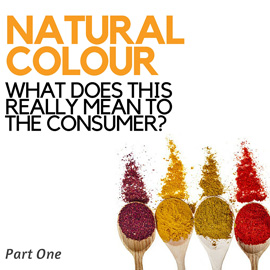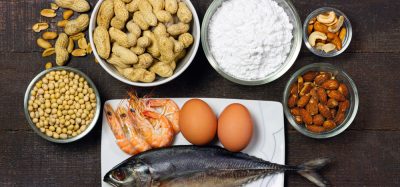Natural Colour? What does this really mean to the consumer? Part 1
- Like
- Digg
- Del
- Tumblr
- VKontakte
- Buffer
- Love This
- Odnoklassniki
- Meneame
- Blogger
- Amazon
- Yahoo Mail
- Gmail
- AOL
- Newsvine
- HackerNews
- Evernote
- MySpace
- Mail.ru
- Viadeo
- Line
- Comments
- Yummly
- SMS
- Viber
- Telegram
- Subscribe
- Skype
- Facebook Messenger
- Kakao
- LiveJournal
- Yammer
- Edgar
- Fintel
- Mix
- Instapaper
- Copy Link
Posted: 26 July 2016 | Guido de Jager | 1 comment
In this three part series, Guido de Jager discusses the results of a global survey that revealed detailed insights into consumer behaviour and preferences for natural colours and flavours…


|
In this three part series Guido de Jager discusses the results of a global survey that revealed detailed insights into consumer behaviour and preferences for natural colours and flavours. In Part one, Guido describes the methodology for the survey and key findings from the results. Part two, to be published next week, discusses consumer types and Part three discusses labelling and opportunities for the food industry. |


In recent years, the food industry has seen a strong trend towards natural products and clean label solutions. But what exactly do manufacturers have to consider in developing products that can be successful today and in the future? They need to know exactly how the demand for naturalness manifests itself in different regions, what natural really means to the consumer and ultimately how it should be communicated on pack to enhance consumer appeal and impact purchase decision.
In order to provide this information and give detailed insights on the consumers perception of food and their related purchase behaviour, the market research institute TNS have conducted a global consumer survey. The survey places emphasis on attitudes towards packaged and processed food and the role colour has to play in the evaluation of products on the supermarket shelf.
The following research questions were taken as a basis for the survey:
- What do consumers seek to avoid and why?
- In which product categories is natural a key driver and what does it stand for?
- How are food colours perceived and evaluated by consumers?
- What impact do front of pack claims have on the purchase decision?
Methodology – worldwide comprehensive survey
To answer these questions, more than 5,000 consumers from ten different countries worldwide were surveyed with the help of a two-step method. In the first, qualitative phase, the attitudes of 175 parents from seven different countries in America, Asia, and Europe[1] were explored in an online platform. Over the course of two weeks, participants were provided with engaging conversation topics and assignments in their local language. By following and analysing their discussion, an in-depth understanding of consumer’s perspective on food and food colouring was achieved.
The preliminary study was also used as a basis for developing the questionnaire for the second, quantitative phase. Here, 5,000 people aged 18 to 70 were surveyed in ten different countries worldwide: Brazil, China, France, Germany, Indonesia, Poland, Spain, Thailand, the United Kingdom and the USA. From each country, 500 people were selected as a representative sample of the population in their home countries.
The desire for natural unites consumers around the globe
The survey’s results confirm that healthy food and beverages are a paramount concern of consumers all around the world: two thirds of consumers are very careful about their selection of groceries and pay close attention to a well-balanced diet. When buying processed and packaged food, 60 percent state that they should contain only natural ingredients.
In the mind of consumers, the term ‘natural’, in general, is particularly connected to the ingredients a product contains. Three out of four respondents agree that packaged food can be natural – as long as it is free from additives. When asked about the meaning of “natural food”, the top answer worldwide, given by nearly 80 percent of the sample, was a lack of artificial colours, followed by the lack of preservatives and artificial flavours. When demanding natural colours, shoppers have a clear definition of these in mind expecting natural food colourings to only originate from edible raw materials such as fruit and vegetables.
Next week, in Part 2 of his review of the global survey on colour, Guido de Jager discusses consumer preference and consumer type.
[1] The seven countries are: Brazil, China, Germany, Indonesia, Poland, UK and the USA.
Related topics
Clean Label, Flavours & colours, Natural, Packaging & Labelling







Natural in the context of food colourings is meaningless because no legal definition extists. For flavourings (in the EU) there is a precise legal definition for what can be called natural supported by guidelines. If the rules for flavourings were applied to the food colourings in the EU very few that are purported to be natural would be.
The FDA in the USA have declined to define the word ‘natural’ after pressure from the US food industry to do so. Their response is; ‘Natural may unjustifiably imply that a food is of superoir quality or safety compared to other similar foods’. (Nabola R. 30th June 2008 ‘Is there a definition for natural foods?’ IFT Annual Meeting and Food Expo, New Orleans.) In other words the word natural itself misleads the consumer.
In this context the survey above is meaningless.